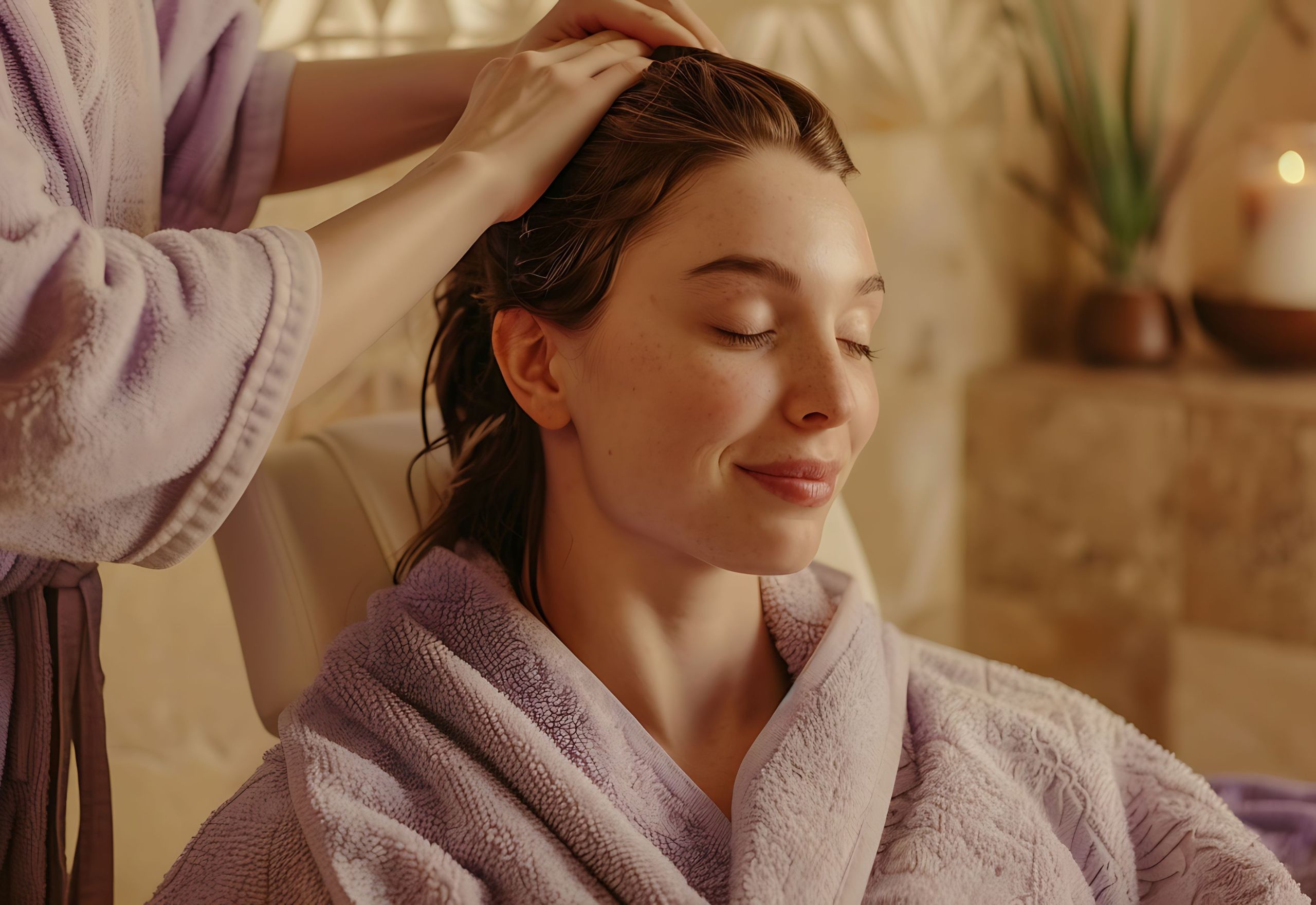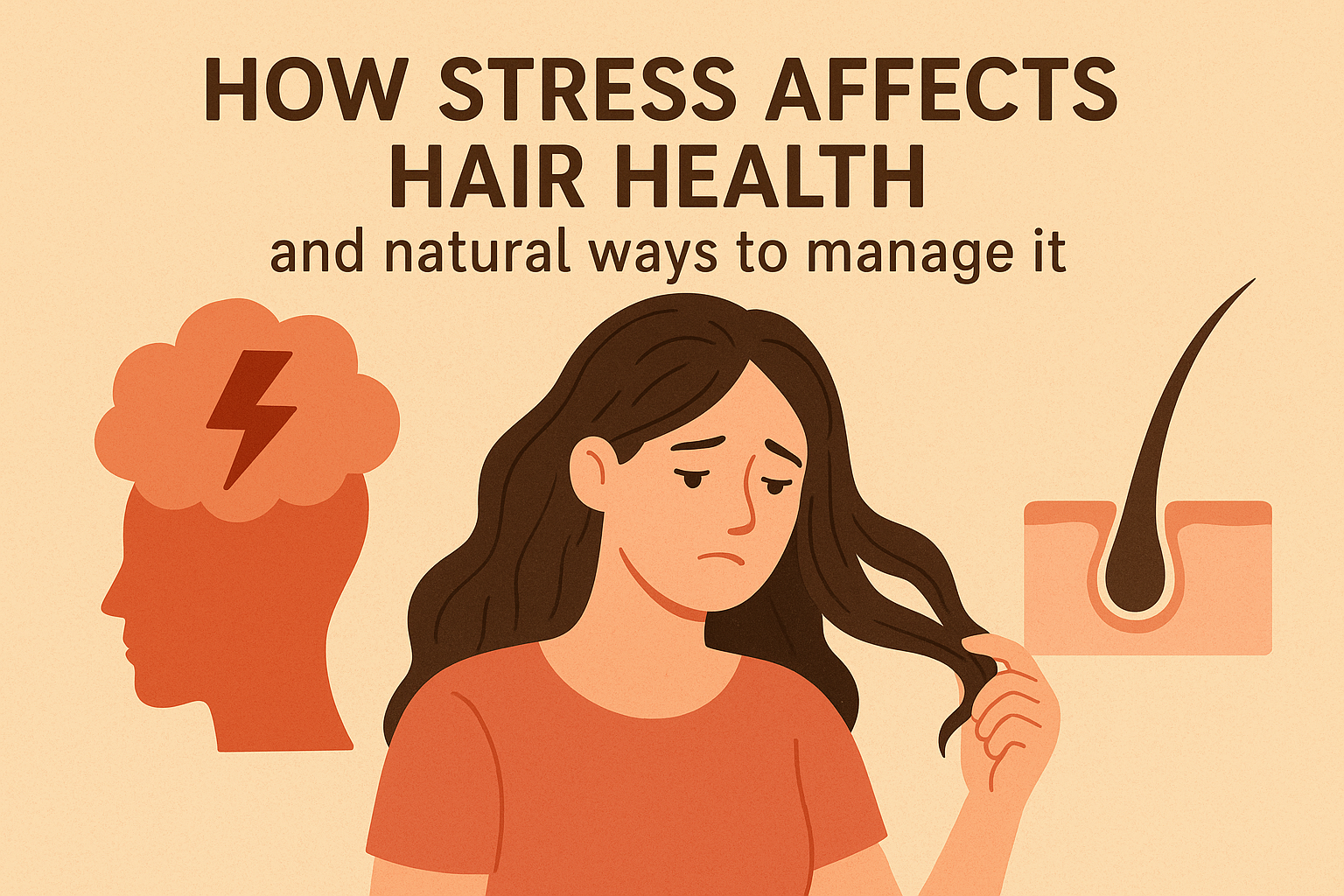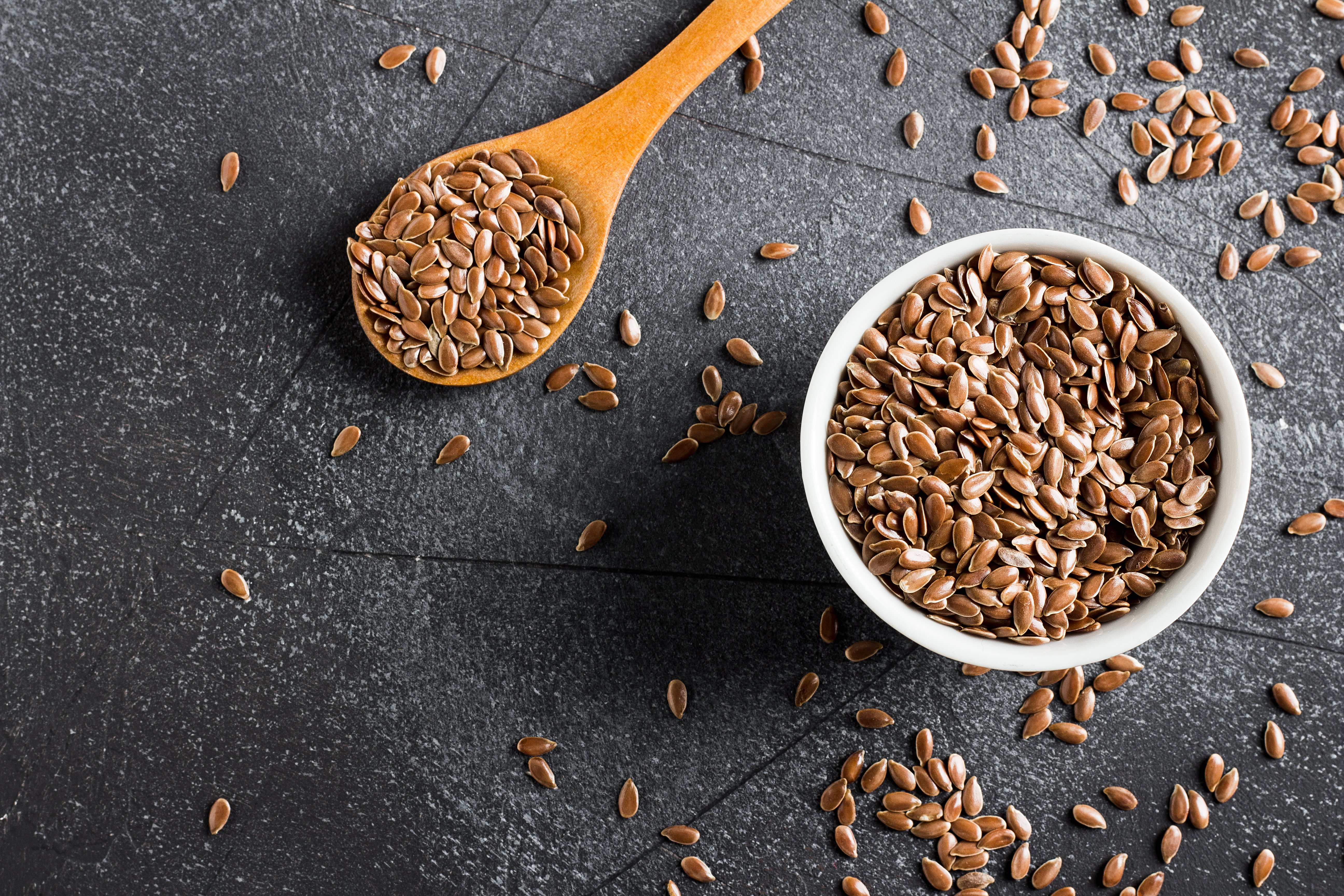If you’ve ever sat in front of the mirror, tugging at your ends and wishing your hair would grow faster, you’re not the only one. We’ve all had those moments where it feels like our hair has just stopped at one length. The truth? Hair only grows about half an inch a month on average. It’s not much, but here’s the thing: what really decides how long and healthy your hair looks isn’t just speed. It’s how well you take care of what’s already growing.
Every effective hair care routine for hair growth doesn’t guarantee overnight miracles, but by developing this into a regular routine, you can help keep your scalp healthy, avoid unnecessary shedding, and allow hair strands to grow as they should. This step-by-step plan will highlight a structured hair care routine for growth, involving cleansing, nourishing, scalp health, and lifestyle decisions to give your hair the best possible chance to look and feel healthy.
Also Read: What Can I Eat to Prevent Hair Loss and Stop My Hair from Falling Out?
Why Routine Matters More Than Miracles
Every strand on your head has its own growth cycle: a growth phase (anagen), a transition phase (catagen), and a rest/shedding phase (telogen). You can’t completely hack biology, but you can create the right environment so more hairs stay in the growth phase and fewer snap or fall out.
That’s why having consistency is so important. One hair mask isn’t going to magically grow your length, but habits you adopt and develop day in and day out, such as gentle washing, proper nutrition, and careful styling, will eventually show visible results. Over time, these small actions add up to a results-driven hair care routine for hair growth.
Step 1: Wash and Condition correctly
Washing is the first pillar of hair care routine for growth. Washing too often can strip natural oil from the hair, but washing too infrequently means your scalp can become clogged with dirt, sebum build-up, or product.
Here’s a good rhythm most people can follow:
1: Wash 2–3 times a week. If your scalp gets greasy quickly, you might wash more often, but keep shampoos mild.
2: Use a gentle, sulfate-free shampoo. Harsh cleansers leave hair dry and fragile.
3: Always condition. Focus conditioner on the mid-lengths and ends to smooth cuticles and prevent split ends.
4: Massage your scalp while shampooing. Not only does it feel relaxing, but it also boosts circulation.
5: Thoroughly rinse with lukewarm water. Hot water washes away oils, dehydrating the scalp and strands.
This simple step will keep hair clean, fresh, and primed for growth without incidental damage.
Step 2: Daily Scalp Care
Imagine your scalp as the “soil” for your hair; if the soil is dry, clogged, or inflamed, growth won’t be healthy.
1: Scalp massage: A few minutes with your fingertips each day can stimulate circulation. Some people even use lightweight oils (like rosemary-infused oil) a couple of times a week.
2: Treat dandruff early: Flakes aren’t just cosmetic; they can irritate follicles. Switch to an anti-dandruff shampoo if you notice persistent flakes.
3: Avoid tight styles: Constant ponytails or braids pull on the hair roots and can lead to thinning as well.
4: Make sure your scalp is cleaned, but it is not stripped: The oils that are naturally produced by the body protect the hair roots; maintaining this balance is the key.
A calm, nourished scalp sets the stage for longer, stronger strands.
Also Read: How to Protect Hair from Dust and Pollution: Effective Tips for Healthy, Clean Hair Outdoors
Step 3: Conditioners and Leave-Ins – Your Length Protectors
One of the biggest reasons people feel their hair “isn’t growing” is that the ends keep breaking off. That’s where conditioners and leave-ins are lifesavers.
1: Rinse-out conditioners smooth the cuticle and prevent tangling.
2: Leave-in sprays, creams, or serums provide ongoing protection through the day.
3: Heat protectants are a must if you style. They form a shield against the damage of flat irons, curling wands, or blow dryers.
4: Air-dry when possible. Even the best protectant can’t erase all heat damage.
These steps don’t just make your hair look better, they help you hold onto every bit of growth you’ve achieved.
Step 4: Weekly Treatments for Extra Strength
Treat the hair once a week for an added resilience boost, especially if the hair is color-treated, heated-styled, or exposed to environmental damage. Regular treatments add to your best hair care routine for hair growth because they work to help the hair from the inside out!
1: Deep conditioning masks: Look for masks with nourishing ingredients like shea butter, honey, or keratin that can replenish lost moisture.
2: Bond-repair treatments: If you color or bleach hair, bond-building products are great for reinforcing the internal structure.
3: Pre-wash oils: Light oils like coconut or argan oil that are applied prior to washing can help reduce protein loss and enhance shine.
4: Scalp scrubs/detox masks: Use sparingly; scalp scrubs can help remove buildup and refresh the hair follicles.
When you take these “insurance” steps weekly, they will help you against daily damage so the hair remains strong enough to help it retain length and continue to grow healthier.
Step 5: Nourishment From the Inside
No routine is complete without nutrition. You can buy the fanciest shampoos in the world, but if your diet is poor, your hair will reflect it.
1: Protein: Hair is made mostly of keratin, a protein. If you’re not eating enough protein, your hair becomes weak and brittle.
2: Iron: Especially important for women. Low iron stores are one of the most common reasons for excessive shedding.
3: Vitamins A, C, D, and E: These support scalp health, collagen, and follicle function.
4: Omega-3 fatty acids: Found in salmon, flaxseeds, and walnuts, they are great for shiny, hydrated hair.
5: Stay hydrated: A dry body means a dry scalp, so water really does matter.
A balanced diet isn’t just good for your body; it’s the ultimate “internal conditioner” for your hair care routine for growth.
Also Read: Hair Loss and Thinning Hair in Women Over 40: Causes, Signs, and Solutions After Forty
Step 6: Styling Smarter, Not Harder
Styling is where many people accidentally sabotage their growth.
1: Use silk or satin pillowcases. They reduce friction compared to cotton.
2: Detangle gently. Always start from the ends, working upward with a wide-tooth comb.
3: Avoid repetitive tension. If you love ponytails, switch up their placement.
4: Cut back on chemical treatments. Relaxers, perms, or bleaching all weaken strands.
5: Be mindful of the heat. If you blow-dry, keep it cool and at a distance.
These little adjustments may seem insignificant, but they will save you years of damaging repercussions from achieving length goals.
Step 7: Advanced Options for Extra Help
If you would like to go beyond a basic hair care routine for growth, specific advanced techniques may help support growth.
1: Essential oils: Massages with Rosemary, peppermint, or castor oil are popular options.
2: Microneedling (professional): Establishes small channels in the scalp, which could potentially stimulate growth signals.
3: Low-level laser therapy (LLLT): At-home laser combs or caps are designed to stimulate follicles with light.
4: Dermatologist-approved treatments: If you notice thinning or receding, don’t wait. Early medical advice makes a huge difference.
These aren’t mandatory, but they can complement your everyday care routine if you want to go the extra mile.
A Weekly Routine You Can Follow
Here’s how a practical weekly plan might look:
1: Daily: Gentle detangle, leave-in conditioner, scalp massage, protective styling.
2: 2–3 times/week: Shampoo + condition, followed by a scalp massage during the shower.
3: Once a week: Deep condition or bond-repair mask, pre-wash oil if needed.
4: Every 8–12 weeks: Dust or trim split ends to keep them from traveling upward.
Consistency here matters far more than perfection. Even if you miss a day, getting back on track makes all the difference.
When to Get Professional Help
Sometimes, no matter how good your routine is, hair troubles persist. Seek professional advice if:
1: You notice sudden clumps of shedding in the shower or on your pillow.
2: You see bald spots or widening parts.
3: Your scalp is itchy, painful, or covered in flakes.
4: Hair growth seems stalled for months despite care.
A dermatologist can run simple tests and suggest tailored treatments that go beyond what you can do at home.
Also Read: Dermarolling for Hair Regrowth: Everything You Need to Know
Quick Fixes for Busy Days
Not every day gives you the time for a whole routine, but several quick hacks will keep your hair protected.
1: You can tie your hair into a loose bun or a braid to minimize exposure.
2: You can use dry shampoo if you skip washing, but you should not rely on dry shampoo in the long run.
3: If your hair has been exposed to dust or pollution, you can always rinse with plain water.
4: Always carry a scarf or hat with you for instant protection when you’re outside.
Making these simple changes will keep your hair looking good, on a daily basis, while minimizing damage.
Conclusion
Healthy, long hair is the result of consistent care, not quick fixes. The best hair care routine for hair growth combines proper washing, scalp care, deep conditioning, balanced nutrition, and protective styling. While genetics decides your growth speed, your habits decide how much length you actually retain.
Stick with your routine for a couple of months, and you will begin to see that you have stronger, shinier, and more resilient hair. Growth will take some time, but with the right strategy, you will finally see the inches you have been waiting for.
FAQs
1. How quickly does hair grow on average?
On average, hair grows about half an inch each month. That’s around six inches a year if you protect and retain your length.
2. How often should I wash for healthy growth?
Two to three times per week works for most people. If your scalp is oily, you may need to wash more often with a mild shampoo.
3. Can scalp massages really help?
Scalp massages are not magic, but a scalp massage a day can improve circulation and relax the scalp, encouraging healthy growth.
4. What foods are healthiest for growing hair?
Eggs, fish, leafy greens, nuts, and beans give protein, iron, vitamins, and Omega-3, all of which are important for strong strands.
5. Do trims help hair grow faster?
No, trimming helps with split ends and prevents them from getting worse. Getting a trim regularly will help your hair look healthier, and it may help it look longer down the road.
6. Are leave-in conditioners necessary for hair?
Not necessary, but helpful for added protection, especially if you’re frequently heat-styling your hair or exposing it to the sun.
7. Does heat styling ruin growth?
Frequent high heat weakens the hair shaft, which leads to breakage. Make sure to use protectants and to limit use where you can.
8. Can natural oils help grow hair?
Light oils such as rosemary or coconut are not going to change your genetics, but they may help reduce breakage and keep your hair shiny.
9. When should I consider medical help?
If you see sudden shedding, bald patches, or ongoing thinning, consult a dermatologist for professional evaluation.
10. Is there a “quick fix” for faster growth?
There’s no shortcut, but protective styles, scalp massages, and good nutrition all speed up how healthy your hair looks.


